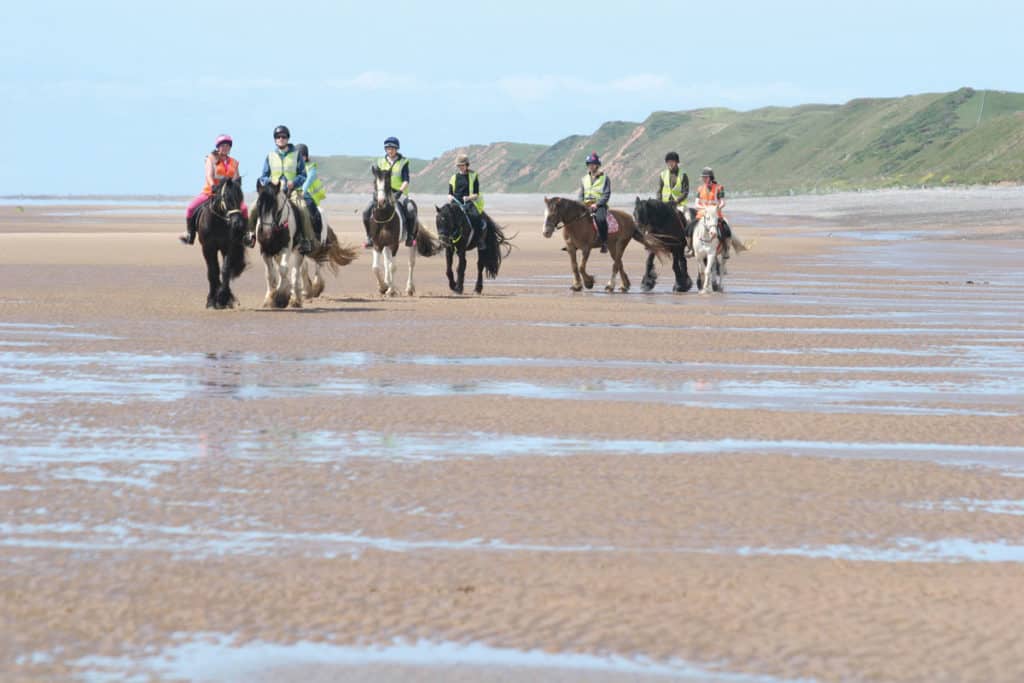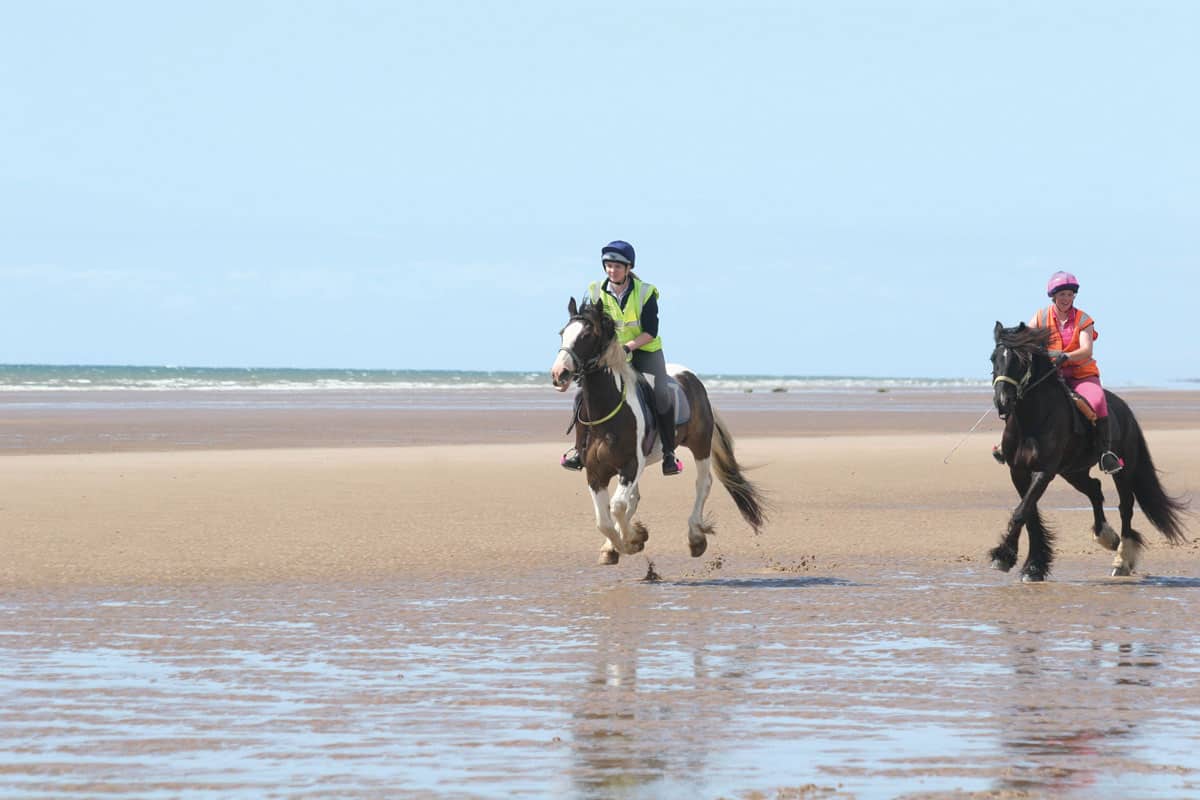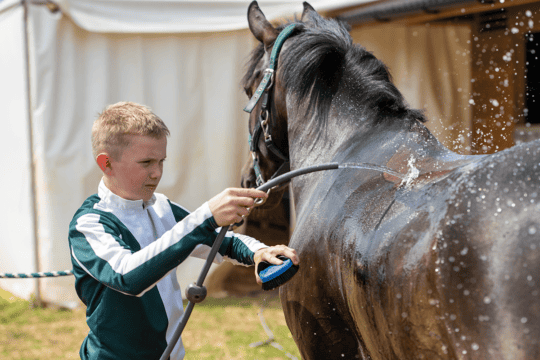
HomePony Know HowRiding TipsFlatworkBeach riding
-
Pony Care Tips
Learn everything you need to know about caring for your fave pony. From feeding and grooming to mucking out – we have it all here!
-
Riding Tips
Improve your riding with our fab articles! Whether it's building your confidence, riding shapes, or jumping spreads that you need tips on, we have something for every rider.
Latest News
Beach riding
Blow away the cobwebs by taking your fave pony on a beach ride

Cantering along a beach with miles of sand stretching ahead of you is one of the most amazing things you can do on horseback, and it’ll be even more special if you’re riding your fave pony. He’s sure to enjoy feeling the sand beneath his hooves as much as you do, because it’ll be a break from his normal riding routine.
While beach riding can be magical, it does require some careful planning to ensure you have the best experience possible. Here’s what you need to know…
Open for access
You may think the best time to head to the seaside is a sunny summer’s day, but autumn and winter are the most horse-friendly seasons for a beach ride. This is because riding is usually only allowed early in the morning or in the evening during summer, because beaches are super busy in the daytime. However, from September to April you may be able to ride on the beach at any time of the day.
Top tip – For your first few trips to the beach, go with a friend who’s ridden there before and has a calm, sensible pony.
Did you know? Some beaches require you to purchase a permit to ride there, so check this out before you go.
Do your research
Horses aren’t allowed on every beach, and not all beaches are suitable for riding on, so you’ll need to find one that’s horse-friendly. Social media is a good place to ask, or maybe a friend could recommend one? Then, check what times you can ride there. Most beaches have websites where you can find this info, and it’ll probably tell you where the best place to park a horsebox is, too.
Top tip – Check the weather reports before your trip and don’t go if bad weather is forecast. Beaches can be dangerous in bad weather, especially if there are strong winds.
The tide turns
Something else that’s really important to check is when the tide will be out. You don’t want to go to the beach at high tide, because there’ll be no sand to ride on! Find out when the tide comes in, too, and make sure you leave the beach well before this or you could get cut off by the sea.
Top tip – You can check tide times for UK beaches at metoffice.gov.uk/public/weather/tide-times
Fun for all
If you don’t have your own pony you can still enjoy a ride on the beach, because loads of equestrian centres offer the experience. Even if you do have a pony it could be a good idea to go to an equestrian centre to get your first taste of beach riding, as their ponies should be safe and experienced. These centres often cater for beginners, so you might even persuade other family members to join you!
Top tip – Kit yourself and your pony out in hi-vis in case something happens and you get separated. It’s also a good idea to attach your name and phone number to his bridle or saddle, too. Small luggage labels are ideal for doing this.

Safety first
Riding on the beach is awesome, but it can also be super-exciting for your pony, especially if he’s never been to the beach before. To help you enjoy a safe, fun ride make sure you…
have control of your pony With all that sand stretching out in front of you it can be tempting to want to gallop straight away, but stay in walk until you’re sure your pony is settled. Then try a steady trot, but come back to walk before you canter to check your pony is listening to you.
are polite to other beach users Even in winter other people will be enjoying the beach, too, such as dog walkers and families, so slow down to a walk to pass them, and keep your distance where possible.
stay vigilant Always expect the unexpected on a beach, so look out for things that could spook your pony. Then if you spot something you can slow your speed and reassure him. For example, there might be people playing ball games, and beaches are popular with kite flyers, too.
only ride in shallow water If you want to ride in the sea be careful, because your pony could find the waves scary, even if he’s usually okay with water. Ride at the very edge of the water at first and, even if your pony’s happy to get his feet wet, stay where it’s shallow because deep water can hide hazards and could cause your pony to trip.
PONY’s top tips for riding on the beach
- Don’t jump the groynes, which are wooden fences you’ll find along the beach, because the ground on the landing side may not be safe.
- Try to go to the beach on foot first, at the same time of day as you intend to ride there, so you can check out how busy it is.
- Not every beach has perfect, level sand, so look out for any hazards, such as mud, dips and holes, so you can avoid them.
- If the adult who’s taking you doesn’t know where to park their lorry or trailer, suggest they contact a local equestrian centre for help – they might even be able to offer you a parking space.
- Give your tack a thorough clean after you’ve been to the beach, because salt from the air and the sea can damage leather.
Sand beneath his hooves
If you’d love to go on a beach ride but live too far away from the coast to go for a day trip with your pony, don’t despair. Why not ask your parents if you can take him on holiday with you? There are lots of B&Bs that cater for horses as well as humans, meaning that you could ride on the beach every day!























I luuuuuuuuuurve beach riding!!!